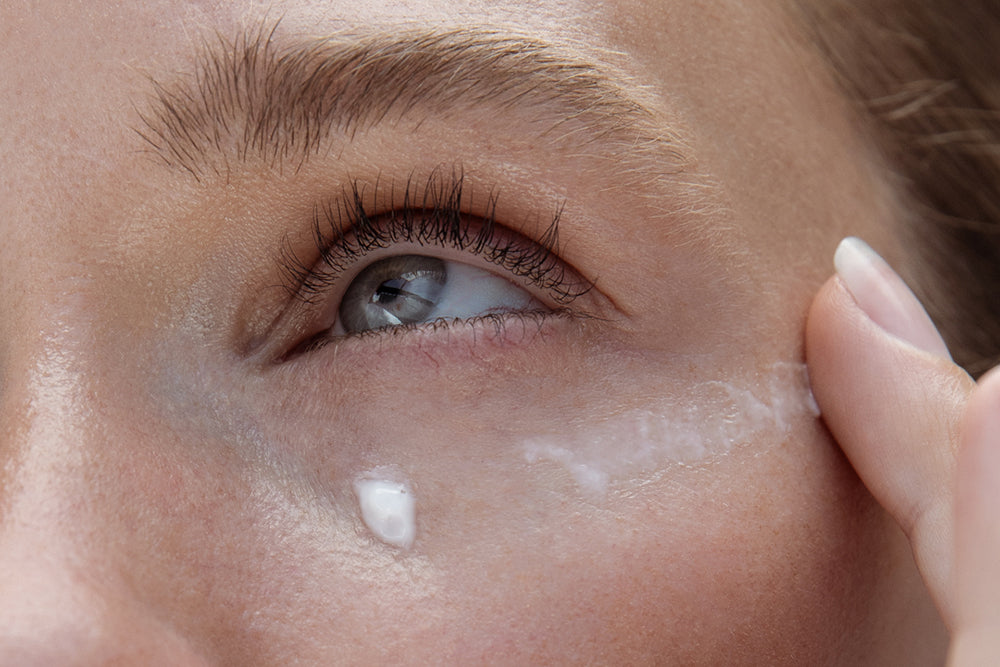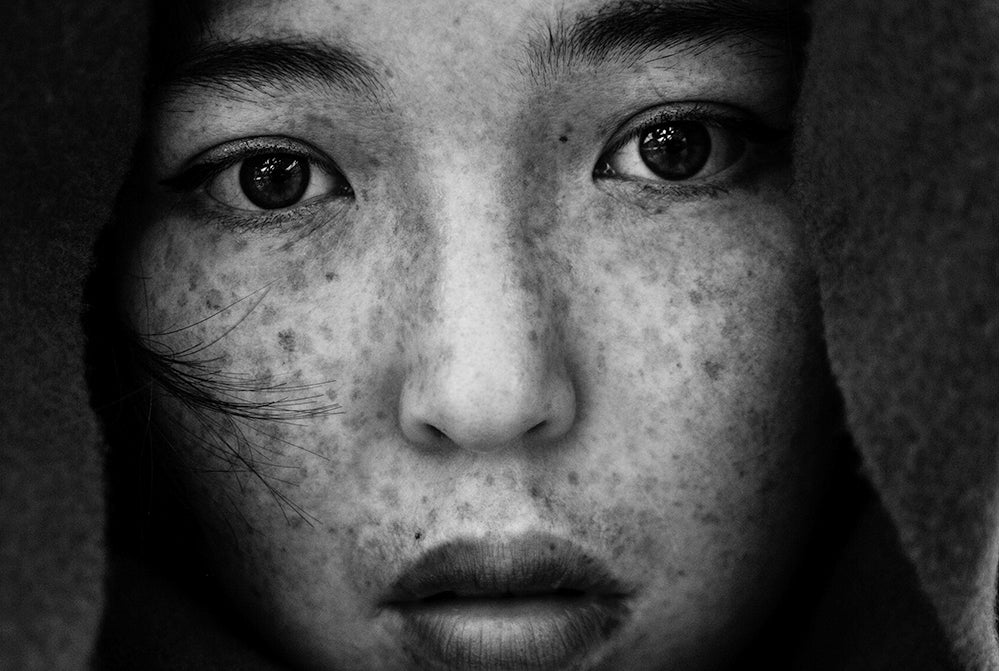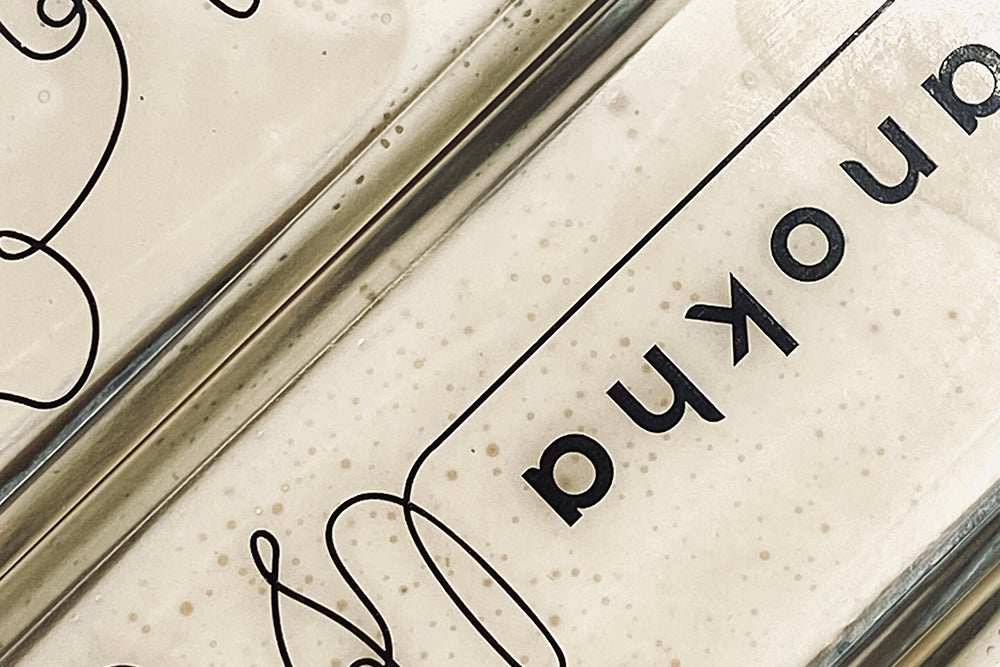
under the eyes

the bottom line
The orbital region (the area located around the eyes) is the source of the most questions and complaints for many people. The skin on this part of the face is thinner and quite delicate, and therefore is one of the first to shows signs of aging. Let's delve into the complaints and some solutions.
first layer: the anatomy of the external eye
While it may appear to be a simple structure, the eye is an incredibly complex organ. The external eye is composed of the following components:
- brow: this soft tissue represents the junction of the frontalis and orbicularis oculi muscles
- eyebrow: the arch of hair on the brow
- eyelashes: those hairs that come from the margins of the eyelids. Typically and most unfairly thick and full in younger men and boys.
- eyelid: the fold of skin and its subcutaneous parts that covers the anterior globe of the eye
- lacrimal punctum: the external aperture of the tear duct system, located in the inner corner of the eye. How we cry.
Surrounding all of this is the orbicularis oculi muscle, fat pads of the upper and lower eyelids, and a relatively thin and somewhat unforgiving layer of skin.
second layer: the problems
There are a few issues in the periorbital arena that really get our lacrimal puncti flowing:
- fine lines and wrinkles: wrinkles are a fact of life, no less inevitable than death and taxes. These can start to appear in the mid- to late 30's, and are exacerbated by excess sun exposure.
- puffiness: fullness under the eyes can occur secondary to a number of factors. If there is excess fluid in the body, as may occur with high salt intake, then this can manifest with puffiness beneath the eyes. Our bodies tend to retain water late in the day and overnight, and this is the time when this fullness is generally most noticeable. As we age, the natural fat pads in the periorbital region can prolapse, or move outwards, as the restraining tissues weaken.
- dark circles: this is the most frequent complaint about the orbital region. The causes of dark circles are varied, and range from chronic sinus congestion to anatomy, sleep deprivation, aging, and heredity.
third layer: the solutions
The eye region is relatively unique in that there are a range of remedies, from home treatments to surgical correction. As with everything else in beauty, we generally recommend starting simple and working on to more invasive treatments only when gentler solutions don't meet your needs.
For fine wrinkles, topical creams which provide hydration are incredibly helpful. Some ingredients we look for include moisturizing butters, oils with linoleic acid which are readily absorbed, and hyaluronic acid to help retain hydration. Retinols and their natural alternative bakuchiol have been shown to be very helpful reducing the appearance of fine wrinkles. For more intense treatment, neuromodulators such as Botox® prevent contraction of the muscles which form the wrinkles. Should you have extra skin around the eyes, surgical correction is indicated.
When targeting fullness under the eyes, understanding the cause is essential in selecting the appropriate treatment. If your eyes are swollen secondary to excess salt intake or a late night, correcting the action usually works. For a quick fix, the old remedy of cold tea bags placed under the eyes is surprisingly effective, as the combination of cold and caffeine constricts the tissues to reduce swelling. Prolapsed fat around the eyes which often occurs with age requires surgical correction.
Dark circles are the most challenging issue to address around the eyes. Here again, the cause is the key to the remedy. If you suffer from chronic allergies, treating these will help to reduce the discoloration from your full sinuses. Dark circles from sleep deprivation are often helped by rest and topical caffeine which helps to constrict the dilated blood vessels beneath the skin. Finally, if you have dark circles secondary to an anatomical "tear trough", a natural depression beneath the eyes, filling the area with hyaluronic acid can be very helpful. This requires needles, a little discomfort, and will be associated with some temporary swelling and possibly bruising.
fourth layer: how we do it
our tsubaki & bakuchiol eye crème combines murumuru butter for elasticity, tsubaki oil for hydration, natural retinol alternative bakuchiol to target fine lines, caffeine to stimulate the microcirculation, and hyaluronic acid to fill and plump.
wakey wakey, bright eyes.
All this and more at www.anokhaskincare.com .
xx
anokha
references:
- https://elementsofmorphology.nih.gov/anatomy-periorbital.shtml
definitions:
orbital: the area around the eyes
faq’s:
what is the most effective under eye cream?
the most effective eye cream is the one that works for you. determine your main area of concern and target it with the appropriate cream.
how do you know which eye cream is best for you?
it depends on your issue - if you have dry skin and fine wrinkles, choose one that has hydrating ingredients such as hyaluronic acid. if you have puffiness or dark circles, look for caffeine as a key ingredient.
where not to apply eye cream?
don't put eye cream directly in the eyes - ouch. avoid the eyelids and don't get too close to the lash line. keep these centered on the orbital rim, the bony area around the eyes.



leave us a comment
This site is protected by reCAPTCHA and the Google Privacy Policy and Terms of Service apply.